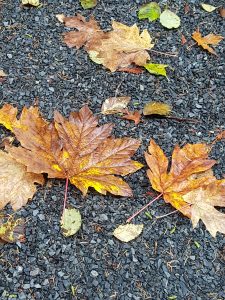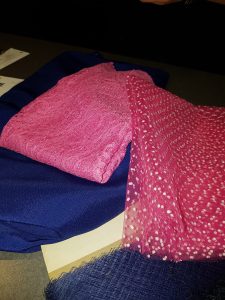 It’s time for more questions from our new writer and answers from more seasoned ones. This week: what lessons did I learn the hard way, and what did I wish I knew starting out?
It’s time for more questions from our new writer and answers from more seasoned ones. This week: what lessons did I learn the hard way, and what did I wish I knew starting out?
Let’s take the last question first. What did I wish I knew at the very beginning of my writing career? As I told our beginning writer friend, I wish I’d understood at a visceral level that this whole business is a long game, a marathon really, and nothing even close to a sprint. After my first book came out and I was contracted for my second, I figured I was on my way, or launched so to speak. Not that there wouldn’t be plenty of hard work ahead – I had no illusions about that – but I didn’t envision so many hills and valleys, so many meandering paths taking unexpected turns. I hadn’t yet learned the importance of fluidity, of pacing myself, and of being open to adjusting for the unexpected. Like a marathoner pays attention to training, to footwear, to staying healthy and hydrated, and bases their success on a slow, steady pace, I’ve learned how important it is for me to pay attention to craft, to my health, and to a balance of work and play.
Lea Tassie, https://leatassiewriter.com author of the Green Blood Rising Series, wishes she’d had more patience back in the beginning, and that she wasn’t so naïve about the publishing industry. Her comment about naivete is the perfect segue into question two: what lessons did you learn the hard way? “I learned that money flows first – or it should flow first – to the writer, not to people like editors or agents who are providing services,” Tassie says. Never go with an agent or publisher who demands money up front, she adds.
My hard lesson was learning and coming to accept that publishing is a business, that decisions are often made with the bottom line in mind, and not always on the merits of a particular manuscript. A ‘no’ on a manuscript doesn’t necessarily mean there’s anything wrong with the story in question. It could be that the publisher has something similar due for release next season, or that their marketing department feels, for whatever reason, that the marketing hook isn’t strong enough to generate a good sell through on your particular story. Of course, this is all based on dealing with traditional publishers. Going the indie publishing route means you’re in control of if, when and how to publish. But that option, as lovely as it sounds, also comes with added responsibilities.
Next week, what is the most effective habit you possess to support your success as a writer . . . and what has been your most rewarding accomplishment?
 Not long ago, I was asked by a woman just starting out on her writing journey if I’d be willing to answer a few general questions about the industry, and some specific questions about my path to publishing. Our conversation really made me think. Over the next few weeks I’ll bring you some of her questions and my answers, along with answers from other authors as well.
Not long ago, I was asked by a woman just starting out on her writing journey if I’d be willing to answer a few general questions about the industry, and some specific questions about my path to publishing. Our conversation really made me think. Over the next few weeks I’ll bring you some of her questions and my answers, along with answers from other authors as well. Today is Halloween, All Hallows’ Eve, also known as Samhain to those who follow these sorts of things. Traditionally, October 31/November 1 marks the end of the harvest season and the start of winter or the ‘darker half’ of the year.
Today is Halloween, All Hallows’ Eve, also known as Samhain to those who follow these sorts of things. Traditionally, October 31/November 1 marks the end of the harvest season and the start of winter or the ‘darker half’ of the year.
 Some days chickens, other days feathers. When the feathers are flying and the chickens are in short supply – in other words when life isn’t unfolding according to plan, escaping into a good book can be a godsend. And that’s exactly what I’ve been doing lately. Here’s what I’m reading this month.
Some days chickens, other days feathers. When the feathers are flying and the chickens are in short supply – in other words when life isn’t unfolding according to plan, escaping into a good book can be a godsend. And that’s exactly what I’ve been doing lately. Here’s what I’m reading this month. For those of us who are news junkies, last week was tough (one could argue that news junkies have had it tough for the last two years, but that’s a whole ‘nother blog). I spent way too much time focused on the Ford/ Kavanaugh testimony before the U.S. Senate, and listening to the analysis afterwards. It brought up a host of emotions for me, not the least of which was how difficult, painful and costly it can be to speak your truth, even when others attempt to deny it.
For those of us who are news junkies, last week was tough (one could argue that news junkies have had it tough for the last two years, but that’s a whole ‘nother blog). I spent way too much time focused on the Ford/ Kavanaugh testimony before the U.S. Senate, and listening to the analysis afterwards. It brought up a host of emotions for me, not the least of which was how difficult, painful and costly it can be to speak your truth, even when others attempt to deny it. For some, the mere mention of the word fitness sends us into, well, fits. One friend of mine is convinced fitness is the ultimate F word. She’s a nurse with a job that keeps her active and on her feet, but that’s not the case for us writers. Writing is, by nature, a sedentary activity and so are many writing-related activities. Things like reading, research, and interviewing people for background information are almost always done sitting down.
For some, the mere mention of the word fitness sends us into, well, fits. One friend of mine is convinced fitness is the ultimate F word. She’s a nurse with a job that keeps her active and on her feet, but that’s not the case for us writers. Writing is, by nature, a sedentary activity and so are many writing-related activities. Things like reading, research, and interviewing people for background information are almost always done sitting down. The season is turning. The mornings have a hint of crispness and the air seems to carry a whiff of wood smoke and resinous pine almost constantly these days. My two kids and many of my friends revel in the coming of fall; they yearn for rain days and heavy sweaters and mugs of cocoa by the fire. Me, I’m a summer girl at heart. I come alive with warmth, and handfuls of deeply scented sweet peas, and ripe juicy peaches. But even though I greet the colder temperatures and lower light levels of September with mixed feelings, I embrace the ‘fresh start’ feel of this time of year. I also adore the first-of-the-season apples and pears, those show off dahlias with their vibrant colors, and the fact that the beaches are nearly deserted now. Mostly I like September because my garden is put to bed, my summer chores are winding down, and I have more time to read. Here’s what I’m reading this month:
The season is turning. The mornings have a hint of crispness and the air seems to carry a whiff of wood smoke and resinous pine almost constantly these days. My two kids and many of my friends revel in the coming of fall; they yearn for rain days and heavy sweaters and mugs of cocoa by the fire. Me, I’m a summer girl at heart. I come alive with warmth, and handfuls of deeply scented sweet peas, and ripe juicy peaches. But even though I greet the colder temperatures and lower light levels of September with mixed feelings, I embrace the ‘fresh start’ feel of this time of year. I also adore the first-of-the-season apples and pears, those show off dahlias with their vibrant colors, and the fact that the beaches are nearly deserted now. Mostly I like September because my garden is put to bed, my summer chores are winding down, and I have more time to read. Here’s what I’m reading this month: Writing books and making hats have something in common. Who knew? I certainly didn’t when I commissioned Lynda Marie
Writing books and making hats have something in common. Who knew? I certainly didn’t when I commissioned Lynda Marie 
 . . . please excuse me if I get a little emotional. In a couple of weeks, our daughter, our first born, will be marrying her beau, her beloved, her partner in bulldog parenthood. It is my fervent wish that she be as happy with him as I’ve been with her father. Of all the successes in the world, I believe a happy home (however you define it: marriage with or without kids (dogs, cats, guppies, lizards), or a happy home you make on your own) is the only measure of success that matters. Having grown up without that solid foundation, it was really important for me to be able to give that to my kids.
. . . please excuse me if I get a little emotional. In a couple of weeks, our daughter, our first born, will be marrying her beau, her beloved, her partner in bulldog parenthood. It is my fervent wish that she be as happy with him as I’ve been with her father. Of all the successes in the world, I believe a happy home (however you define it: marriage with or without kids (dogs, cats, guppies, lizards), or a happy home you make on your own) is the only measure of success that matters. Having grown up without that solid foundation, it was really important for me to be able to give that to my kids.
 Those lazy, hazy, crazy days of summer. With the exception of the word lazy, the phrase is particularly apt this year. The skies are hazy from nearby forest fires, and the tempo of my life is edging to the crazy side. That means reading time is at a premium, and whatever book I pick up must be compelling enough to hold my attention and keep me away from my out-of-control ‘to do’ list. Lucky for me there’s no shortage of great material. Here’s what I’m reading this month:
Those lazy, hazy, crazy days of summer. With the exception of the word lazy, the phrase is particularly apt this year. The skies are hazy from nearby forest fires, and the tempo of my life is edging to the crazy side. That means reading time is at a premium, and whatever book I pick up must be compelling enough to hold my attention and keep me away from my out-of-control ‘to do’ list. Lucky for me there’s no shortage of great material. Here’s what I’m reading this month:
Comments